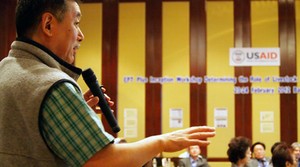Influenza: FAO monitors pigs, poultry and waterfowl in hot spots

-When there is recommendation to cull all chicken stocks of any farm near to the outbreak area it is best to cull all the identified species by FAO deliberately from this Asian countries if suspected so that FAO will suspect some other species.
-All public sector organization when become indecisive make mistakes. Do the virologists have studied this AI virus properly on zoonotic importance? If there was record of pandemic situation 100 yrs back and killed some million of human then why this issue only came in 2003 only and dragged till date. Was there any record available on the lab test findings of 100-150yrs back?
-Let us take decisions to close the issue through banning the any farming on poultry,pig all over world.This is because we have to worry now tsunami not bird flu.
-FAO is unnecessarily encouraging panic involved issues although impact of AI virus on human has not been sufficiently supported with lab findings to create hypothetical plannings when we have no control on nature and wild animals and wild bird.
-It is only way available to improve immunity of all animals and birds including human beings for combined living on this world with R and D for vaccine development.
-It is essay to plan but can we control natural situations and natural provisions?Let us make stringent action plan for poultry farming and pig farming and cattle farming(AI n B SE) . what to be done what not to be done is now a grate issue? Are we issue wise planning or promoting some issues is getting confused to all.
-one side trade, other side human food of the region. Are welfare points are meant for trade control or rarely we have to stop all animal husbandry activities due to court decisions and FAO,WHO etc rulings need clarification in the present age.
-Let us wait and see at the cost of public money? which is important food and agriculture or human AI issues? what is the balance between all such issues? WHO is correct ? Let us protect the planet by complete stopping the all kinds of mining operation for metals and oil and water so that less stress will be there . Come to stop the wealth fighting first and depend on agriculture only which is natural provisions.






